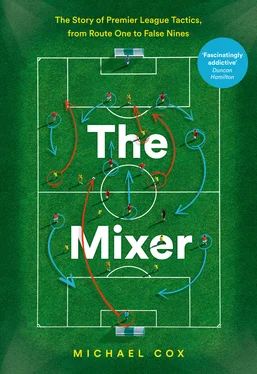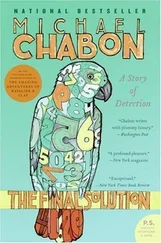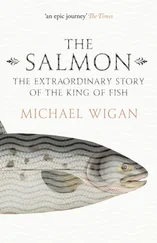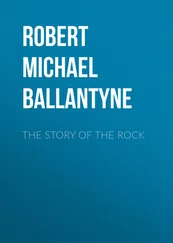1 ...6 7 8 10 11 12 ...25 Ferguson could barely contain his excitement, saying, ‘Some of our football was breathtaking, unbelievable stuff,’ while Cantona later provided the best summary. ‘That was the turning point,’ he said. ‘We played a perfect game. We played perfect football.’ United went on to win the title, and that performance pointed the way to Premier League glory. Had Norwich defeated United and gone on to win the title themselves, their incredible underdog success might have popularised possession football. Instead, inspiration came from United’s speed.
Manchester United’s first Premier League title was achieved when things fell into place almost accidentally, but the following season, 1993/94, saw them reach a different level entirely. Players often remark upon the difficulty of defending a title – there’s less motivation to succeed, and opponents up their game against the champions – but Ferguson, who had retained the Scottish title with Aberdeen in the mid-1980s, astutely ensured his players maintained their desire. Before the start of the campaign he announced to United’s squad that he had a sealed envelope in his office drawer, containing a piece of paper with a list of players he believed lacked the hunger to win a second title. The trick proved highly effective, with his players determined to prove him wrong.
Ferguson, typically for this period, canvassed the views of his players about potential new recruits, and after they unanimously agreed that Nottingham Forest’s Roy Keane was a top-class midfielder, Ferguson broke the British transfer record to make one of his most important signings. This changed the balance of United – with McClair relegated to the bench, Keane formed a brilliantly aggressive, combative central midfield partnership with Ince. Cantona’s influence was naturally greater because he was present from the outset, while Giggs became a greater goal threat from the left and Kanchelskis, peripheral in the previous campaign, was outstanding down the right. Such was the emphasis upon battling central midfielders and electric wingers, some journalists depicted United’s formation as 4–2–4, although in reality it was a 4–4–1–1, and not dissimilar to the 4–2–3–1 that only became a recognised Premier League system a decade later.
United were utterly dominant throughout 1993/94. Within the opening fortnight they’d won away at their two title rivals from the previous campaign, Norwich and Aston Villa, and topped the table from the end of August onwards. They only lost twice until the end of March, both against Chelsea – although United defeated them 4–0 in the FA Cup Final, which clinched the club’s first-ever double. Ferguson’s first-choice XI played together 13 times, and won 13 times.
Subsequent United teams would become more cultured, particularly when Paul Scholes and David Beckham emerged to provide passing quality from midfield, which helped United progress in Europe. But in Premier League terms, Ferguson’s 1993/94 first-choice XI was perfectly suited to the week-in, week-out challenges of a division still based around physical football, with tough tackles, poor pitches and 42 games – four more than from 1995/96 onwards, when the division was reduced from 22 to 20 teams. They were ‘real tough bastards’ in Ferguson’s words, and he later suggested that his 1993/94 side were as good as the treble winners of five years later.
Manchester United’s 4–4–1–1, with combative central midfielders and speedsters out wide, would essentially become the standard tactical template throughout the Premier League’s first decade. The difficult part for teams hoping to follow in their footsteps, however, was obvious: finding their Cantona.
3
The SAS & The Entertainers
‘I’ll tell you, honestly, I will love it if we beat them. Love it.’
Kevin Keegan
Sir Alex Ferguson famously described his greatest challenge at Manchester United as ‘knocking Liverpool right off their fucking perch’. He had turned United into English football’s dominant side, and they would eventually overtake Liverpool in terms of league titles. During the mid-90s, however, United’s greatest title fights were not against Liverpool, but against clubs managed by two ex-Liverpool forwards: Kenny Dalglish’s Blackburn Rovers in 1994/95 and Kevin Keegan’s Newcastle United in 1995/96.
Under these managers, Blackburn and Newcastle did everything a year apart. Dalglish had taken charge of second-tier Blackburn in 1991 and achieved promotion in 1992. Keegan took charge of second-tier Newcastle in 1992 and won promotion in 1993. Blackburn hadn’t won the championship since 1928, Newcastle not since 1927. There were similarities between Keegan and Dalglish, too; they were born within a month of one another in 1951, and when Keegan left Liverpool for Hamburg in 1977, his replacement up front was Dalglish.
Tactically, both sides played 4–4–2, concentrating upon width, crosses and a towering number 9, and there was also a common link in defensive midfielder David Batty, who came into the side towards the end of both Blackburn’s 1994/95 triumph and Newcastle’s 1995/96 campaign. Both clubs, meanwhile, suffered a significant late-season slump during their title challenge. That might sound peculiar, considering Blackburn triumphed in 1994/95 and Newcastle are remembered as ‘bottlers’ for blowing a 12-point lead the following season, but Blackburn’s collapse had been equally dramatic. They contrived to lose three of their final five games during their title-winning season, including a dramatic final-day defeat at Anfield, where even Liverpool supporters wanted Blackburn to win, to deny rivals Manchester United another title and to witness Dalglish, an Anfield legend, lift the trophy.
Left-back Graeme Le Saux later outlined the extent of Blackburn’s nerves in the final weeks, admitting that the players became obsessed with Manchester United and claiming that Dalglish didn’t know how to control the situation. At half-time on that final day at Anfield, winger Stuart Ripley sat down in the dressing room and declared he was so nervous he couldn’t get his legs to work properly. Blackburn were saved by Manchester United’s failure to win away at West Ham. In the ‘bottling it’ stakes, therefore, there was minimal difference between Blackburn in 1994/95 and Newcastle in 1995/96 – aside from the fact that Dalglish convinced the outside world he had things under control, while Keegan had a meltdown live on TV with his famous ‘I will love it if we beat them’ rant.
Dalglish and Keegan were primarily man-managers and motivators rather than tacticians or training-ground coaches; they attracted players through their reputation as legendary players and broadly left them to their own devices. The most significant difference was the nature of their assistants. Dalglish’s only previous managerial post was at Liverpool, where he maintained the pass-and-move football his predecessors had introduced. At Blackburn, however, he was starting from scratch, and with more limited players, so his approach was much simpler. Dalglish decided he wouldn’t take charge of Blackburn without Ray Harford, widely considered one of the most intelligent, inventive English coaches of his generation.
Harford boasted managerial experience, having been promoted from assistant to manager at Fulham, Luton (where he won the League Cup) and Wimbledon. He would later succeed Dalglish at Blackburn, too. His Luton and Wimbledon sides were renowned for their direct football, and he provided the coaching expertise that Dalglish lacked for creating a straightforward but effective crossing side. Dalglish said his ‘coaching, organisation, his deep knowledge of football’ made him the perfect assistant, and Harford took almost every Blackburn training session, concentrating heavily upon ‘pattern of play’ sessions that improved Blackburn’s passing and movement.
Читать дальше












